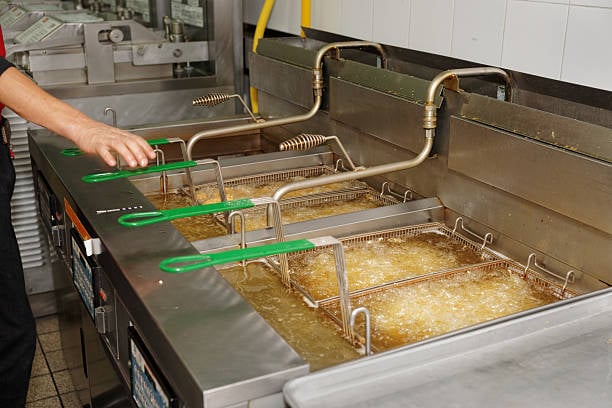There are literally thousands of restaurants, cafes, and diners throughout America, and a high percentage of them will have at least one deep fryer firmly ensconced in the kitchen. While we all know what harm the regular consumption of deep-fried food can do to our bodies, that doesn’t stop it from being so delicious and so darn popular!
If you own a commercial food business and have a restaurant deep fryer taking pride of place in your kitchen, you’ll want to know how best to protect your investment so that you can keep on bringing fried delights to your drooling customers. With this in mind, here are some handy hints for getting the most out of your commercial deep fryer:
- Daily Quick Clean-Up Routine:
While the prospect of daily cleaning may not elicit excitement, it remains one of the cornerstone practices to preserve your deep fryer. Beyond exterior wipes, a daily ritual involves removing the frying basket for a thorough dishwasher cycle. Blot it dry using paper towels or a cloth before reinstating it in the fryer. Although daily oil changes are unnecessary, committing to a daily exterior and basket cleaning regimen significantly contributes to the overall longevity of your fryer.
- Comprehensive Cleaning During Oil Changes:
Every oil change presents an opportune moment for a comprehensive cleaning session. The heating elements, critical for cooking the oil, are prone to accumulating debris over time. Ensuring these elements receive a thorough cleaning during oil changes promotes optimal functionality, allowing the fryer to consistently produce perfectly cooked food.
- Scheduled Deep Cleaning:
While daily cleaning stands commendable, it alone is insufficient to maintain a deep fryer’s optimal condition. Fryers subject to regular use should undergo a deep cleaning at least every six months, with frequency adjusted based on usage. A comprehensive deep cleaning involves draining the oil, introducing warm water and an appropriate cleaning solution, simmering the water (avoiding boiling), scrubbing the interior with a soft brush, and allowing it to dry before refilling with oil.
Alternatively, the boil-out method, involving a specialized cleaning rod and solution, provides a thorough approach. Draining all fat and grease, cleaning the drain line, rinsing with hot water, and filling the fryer with a deep fryer-friendly cleaning solution are steps in this method. Boiling the water, allowing it to cool, and draining fully before adding new oil completes the process. This periodic deep cleaning ensures the fryer operates smoothly and maintains a fresh oil supply.
- Professional Inspection Annually:
For a comprehensive evaluation, enlist the expertise of a qualified food service technician to inspect your commercial deep fryer annually. This professional examination ensures that every component of the machine operates at its best, potentially saving you significant costs in the long run.
- Oil Quality Management:
To ensure the quality of your fried offerings, proactive oil management is essential. Regularly monitor the oil for signs of degradation, such as excessive smoking or changes in color. Consider investing in oil filtration systems to extend the oil’s lifespan, enhance food quality, and optimize your operational costs.
- Employee Training and Best Practices:
Equip your kitchen staff with proper training on deep fryer usage and maintenance. Instill best practices for safety, efficient operation, and timely cleaning routines. Well-trained staff not only ensures the longevity of your equipment but also contributes to the consistent delivery of high-quality fried dishes.
In valuing your commercial deep fryer, incorporating these practices into your maintenance routine is essential. Whether it’s daily quick clean-ups, thorough cleanings during oil changes, scheduled deep cleaning sessions, annual professional inspections, or proactive oil quality management, each step plays a vital role in maximizing the lifespan and efficiency of your commercial deep fryer. By heeding this advice, you not only protect your investment but also continue to delight your customers with delectable fried offerings, establishing your kitchen as a beacon of culinary excellence.

